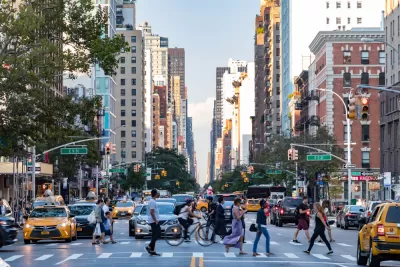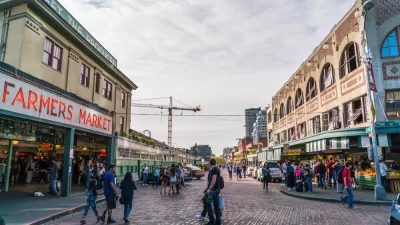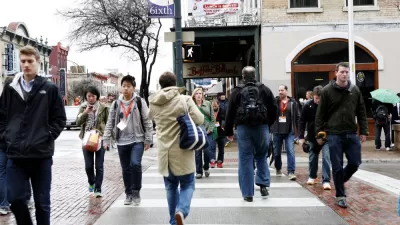Reports of the city’s death have been greatly exaggerated, according to new research from Smart Growth America.

Smart Growth America’s 2023 Foot Traffic Ahead (FTA) report firmly debunks the “death of the city” predicted during the pandemic. According to the report, “the city endures, and across most metros, grew walkable urbanism.”
The report examines changes in walkability in the nation’s 35 largest metropolitan areas, how that has impacted local housing costs, and “provides policymakers with recommendations on how to increase both the supply of and access to equitable, walkable development while safeguarding affordability.”
FTA finds that walkable urban places remain highly desirable, provide the most economic opportunity, and have a range of other benefits, but limited supply means many of these places are increasingly unaffordable for many Americans. “The major reason for the high walkable urban price premiums is the artificial constraint on walkable urban land availability,” the report states, blaming restrictive zoning for much of the problem.
Walkable urban areas have the potential to improve community health by promoting physical activity, can reduce emissions by decreasing car use, and can advance equity by bringing access to economic opportunity. It is critical that people of all backgrounds, especially those historically disadvantaged by racist land use, housing, and lending policy, have access to walkability and all the benefits associated with it.
The report recommends that policymakers focus on increasing the supply of walkable communities, reforming outdated zoning, planning for the impacts of climate change, and protecting affordable housing.
See the source article for a link to the full report.
FULL STORY: Foot Traffic Ahead

Planetizen Federal Action Tracker
A weekly monitor of how Trump’s orders and actions are impacting planners and planning in America.

The Simple Legislative Tool Transforming Vacant Downtowns
In California, Michigan and Georgia, an easy win is bringing dollars — and delight — back to city centers.

San Francisco's School District Spent $105M To Build Affordable Housing for Teachers — And That's Just the Beginning
SFUSD joins a growing list of school districts using their land holdings to address housing affordability challenges faced by their own employees.

In More Metros Than You’d Think, Suburbs are Now More Expensive Than the City
If you're moving to the burbs to save on square footage, data shows you should think again.

The States Losing Rural Delivery Rooms at an Alarming Pace
In some states, as few as 9% of rural hospitals still deliver babies. As a result, rising pre-term births, no adequate pre-term care and "harrowing" close calls are a growing reality.

The Small South Asian Republic Going all in on EVs
Thanks to one simple policy change less than five years ago, 65% of new cars in this Himalayan country are now electric.
Urban Design for Planners 1: Software Tools
This six-course series explores essential urban design concepts using open source software and equips planners with the tools they need to participate fully in the urban design process.
Planning for Universal Design
Learn the tools for implementing Universal Design in planning regulations.
Smith Gee Studio
City of Charlotte
City of Camden Redevelopment Agency
City of Astoria
Transportation Research & Education Center (TREC) at Portland State University
US High Speed Rail Association
City of Camden Redevelopment Agency
Municipality of Princeton (NJ)





























